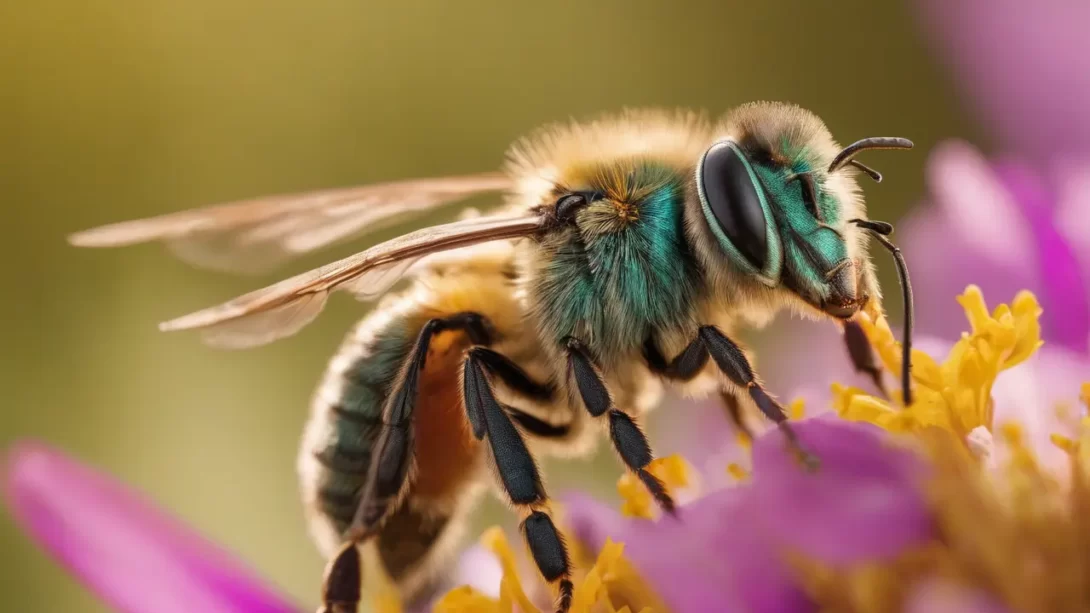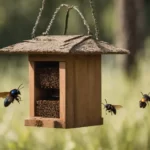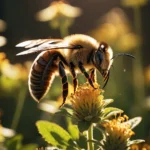Sweat bees, a common name for a large family of small to medium-sized bees, are a familiar sight in many outdoor settings. Known scientifically as Halictidae, these bees often draw attention due to their attraction to human sweat, a unique behavior among bees. Understanding what attracts sweat bees is crucial for effectively managing their presence, especially in areas where human-bee interactions are frequent. This article aims to explore the various factors that draw sweat bees to certain environments.
Sweat Bees
Sweat bees are typically characterized by their metallic sheen, ranging in color from green to blue and sometimes even copper. They are generally smaller than common honeybees and bumblebees. An important part of the ecosystem, sweat bees play a significant role in pollination, helping in the growth of many plants and crops. They are commonly found in a variety of habitats, including gardens, forests, and meadows, and are known for their relatively gentle nature.
Key Factors Attracting Sweat Bees
Several factors contribute to the attraction of sweat bees to specific areas, the most notable being human sweat, floral nectar and pollen, certain colors and scents, and the availability of water.
Human Sweat
Sweat bees are notably attracted to human sweat, which is where they get their common name. They are drawn to the salt and moisture present in sweat, which are valuable resources for their nutritional needs. During hot and humid weather, when human sweating is more prevalent, these bees are often seen hovering around people, attracted by the saltiness of the sweat on their skin.
Floral Nectar and Pollen
Like many other bee species, sweat bees are attracted to floral nectar and pollen. They play a crucial role in the pollination of a variety of flowering plants. Certain flowers and plants are particularly appealing to them, often those that provide ample nectar and pollen. The specific types of plants that attract sweat bees can vary depending on the region and the local flora.
Colors and Scents
Sweat bees, like many pollinators, are also attracted to specific colors and scents emitted by flowers. They tend to be drawn to bright colors such as yellow, blue, and purple, which are indicative of flowering plants rich in nectar and pollen. In addition to visual cues, the fragrances released by flowers play a crucial role in attracting these bees. Floral scents act as a natural beacon, guiding sweat bees to their preferred plants. Understanding this attraction can be helpful for gardeners looking to attract pollinators or, conversely, for those trying to make their gardens less enticing to these bees.
Water Sources
Another key factor in attracting sweat bees is the availability of water sources. Bees, including sweat bees, require water for various physiological processes. They use water to regulate the temperature of their nests and to dilute stored honey. Small puddles, bird baths, or even damp soil can be attractive to sweat bees, especially in dry conditions. The presence of a consistent water source can significantly increase the likelihood of these bees visiting an area.
Managing Sweat Bees
While sweat bees are generally harmless and beneficial for the ecosystem, their presence can be unsettling, particularly when they are attracted to human sweat. Reducing the factors that attract these bees can help manage their presence in residential areas. This includes minimizing exposed skin when sweating, avoiding bright floral patterns in clothing, and being cautious with fragrances that mimic floral scents. In gardens, managing the types of flowers planted and controlling water sources can also influence the presence of sweat bees.
Conclusion
Sweat bees are attracted to a variety of factors, including human sweat, the nectar and pollen of certain flowers, bright colors and floral scents, and accessible water sources. Their attraction to human sweat, a unique characteristic among bees, is primarily due to the salts and moisture it provides. In the garden, they are drawn to plants that offer abundant nectar and pollen, particularly those with bright blooms and strong scents. Additionally, like all bees, they need water for survival, making any available water source in dry conditions particularly attractive.
Managing the presence of sweat bees involves a careful balance. While their attraction to humans can be inconvenient or uncomfortable, especially in outdoor settings, it’s important to remember their beneficial role in pollination and the ecosystem. Simple measures like wearing unscented products, avoiding bright floral clothing, and managing garden plant selections can help reduce unwanted encounters with these bees. In gardens, thoughtful planning can either attract or deter them, depending on the gardener’s goals.
In conclusion, understanding what attracts sweat bees is the key to coexisting with them. While they can be a nuisance in certain situations, their ecological importance cannot be overstated. By taking appropriate measures, it’s possible to minimize negative interactions with these bees while still appreciating the vital role they play in our environment.



